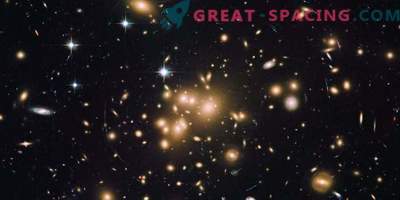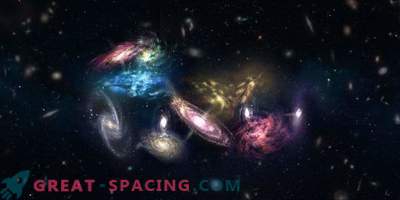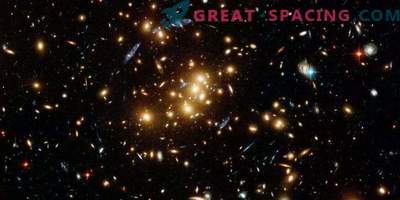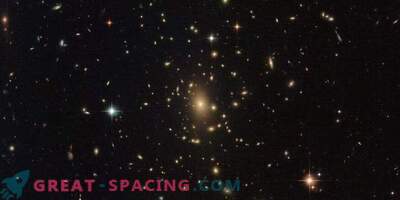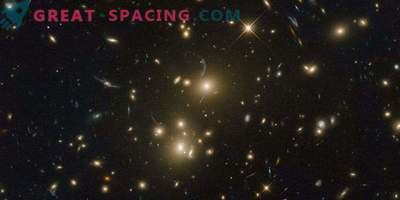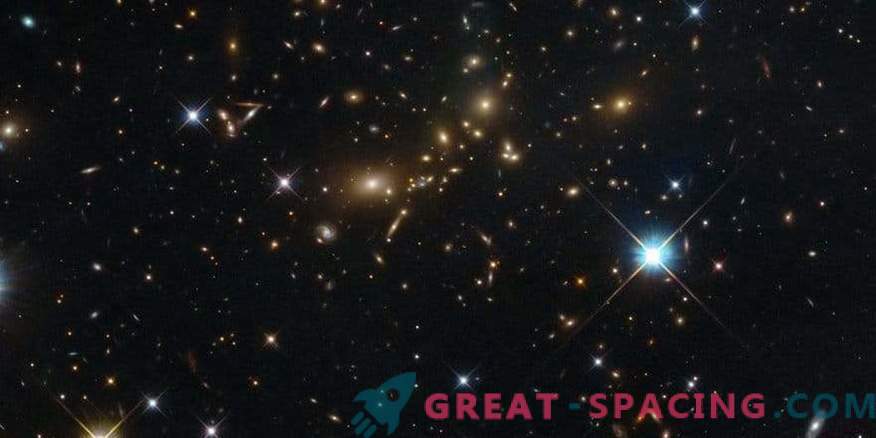
A shot from the Hubble Space Telescope demonstrates a massive galactic cluster of PLCK_G308.3-20.2, which produces a bright light in the dark.
Such objects are able to contain thousands of galaxies united by gravity. Previously, they were considered the largest ecumenical structures, until in the 1980s. have not discovered superclusters that have dozens of clusters and galactic groups and extend hundreds of millions of light years. But there is one caveat: superclusters are not held together by gravity, so galactic clusters officially still occupy the status of the largest (by gravity binding).
One of the most amazing features is the material penetrating the space between the inner galaxies. This is the medium inside the cluster. In these places, an elevated temperature is created, and the space itself is filled with plasma - a substance in a superheated state. Do not forget that most of the mass in clusters is represented by dark matter. It is not created from ordinary, like protons, neutrons and electrons, and occupies 80% of the mass of the Universe. For shooting they used an improved wide-angle Hubble camera 3 as part of the RELICS program. The project displayed 41 massive galactic clusters to find the most distant bright galaxies that will become the target of the James Webb telescope.
